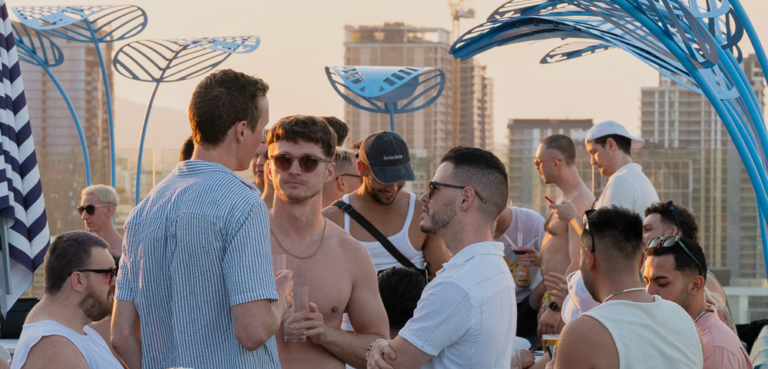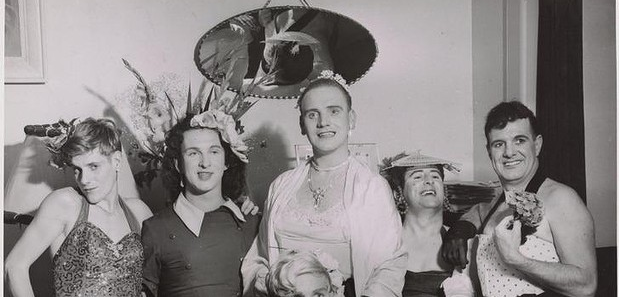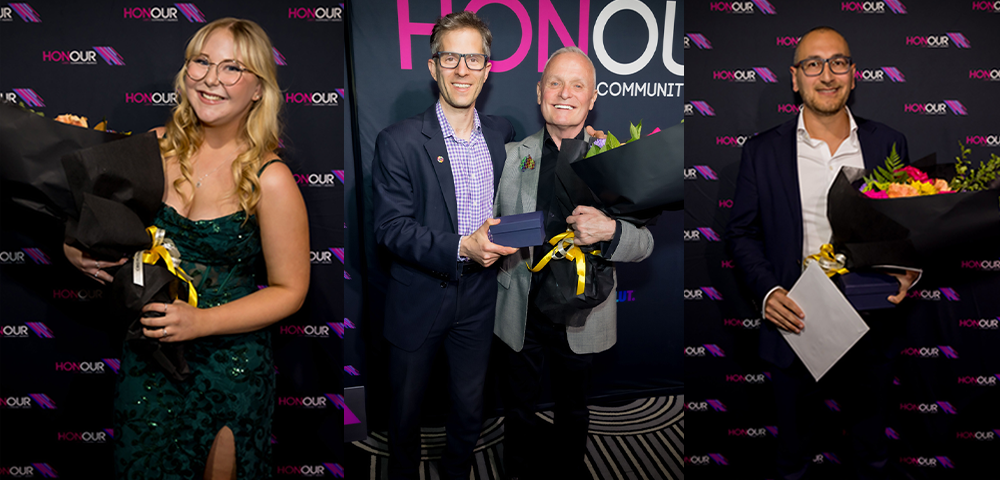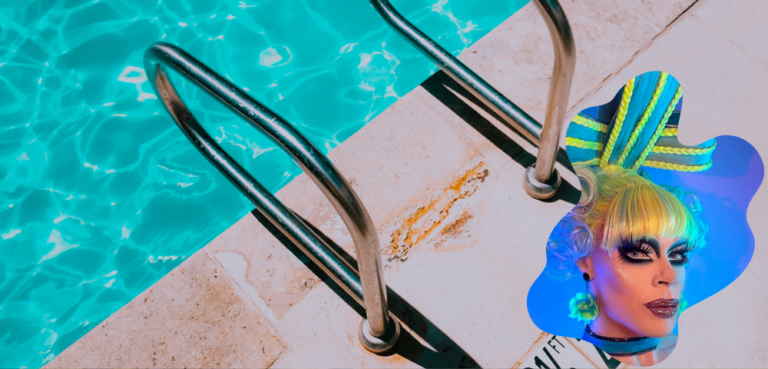
Daughters of anarchy
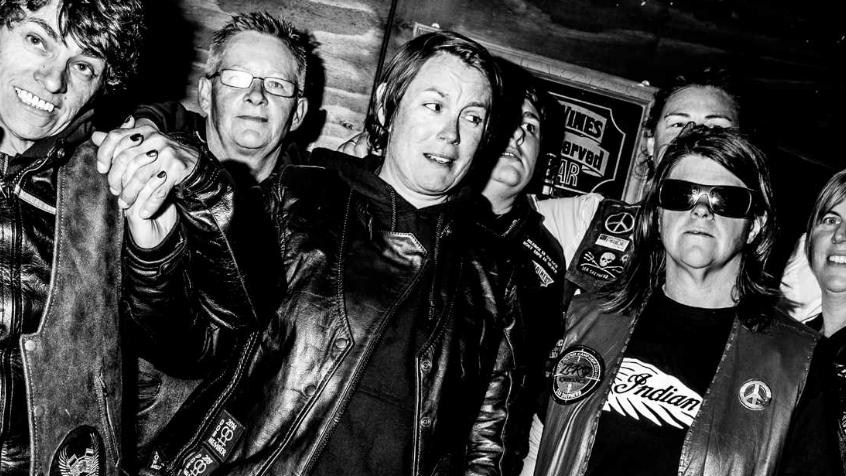
MELBOURNE’S annual Pride March was running late.
Daniel Andrews was set to march — the first Victorian Premier to do so in its 20-year history — but his late arrival meant the thousands of marchers spilling out of the marshalling area were getting restless.
While coverage the next day would remember the historic moment a Premier led Pride March, in reality, the first group along the Fitzroy St route was the same as it is every year. The beginning of the march was signalled by the roaring of engines and by rainbow flags flapping in the wind — the Dykes on Bikes had arrived, and Pride March could get started.
This was Vikki “Foss” Little-Groves’ second year riding in the march with the club’s Melbourne chapter.
“It revs the crowd up, it really gets them going,” she said.
“A soon as people hear the engines they know the parade has started, and everyone gets excited.”
One of the excited people cheering Little-Groves on was her six-year-old daughter, who watched her mum start the march before joining it herself on foot. Little-Groves had to give up riding for a few years when her daughter was born, but now she’s glad to be riding with Dykes on Bikes.
“Now that my daughter’s a bit older I’m starting to get back into things that bring me joy, and now I’ve got my six-year-old daughter riding on a PeeWee 50,” Little-Groves said.
“She loved it. She thinks it’s fantastic that I’m in a bike club.”

In a very real sense, Dykes on Bikes is a global club. Founded in San Francisco at the city’s 1976 Pride Parade, what started out as an informal group of female motorcyclists grew to become legendary — a global queer icon.
The establishment of the Sydney chapter in 1988 brought Dykes on Bikes to Australia, and a Victorian chapter followed not long after. While internal strife a few years back led to Dykes on Bikes Victoria’s dissolution, Dykes on Bikes Melbourne was formed in 2011 by a few members of the previous chapter, and it’s gaining new members every year.
Robin “RH” Hood obtained her motorbike licence a decade ago, but she only recently became an official Dykes on Bikes member.
“I used to ride trail bikes when I was younger — off-road bikes — and went through a mid-life crisis at 40 and thought, well, I’ll get my bike license,” she said, laughing.
“I’ve been riding for about 10 years but I’m still going through my crisis. It’s helped. Yeah, I like the freedom of a motorbike.”
The sunglasses-clad rebel said she’d had no interest in joining a club, but talk of Victoria following suit with anti-association laws modelled on Queensland’s spurred her to join as a political act.

Hood is one of many members who already rode before she joined the club, though there’s a real mix of people who’ve been riding for most of their lives and those who only got started as adults. Club member Brydie Abram joined up with her partner Diane, who got her into bikes.
“I met my partner overseas, we were living in China, and I learnt to ride a bike over there. When we moved back to Australia we wanted a network of people who also rode, so we hooked up with Dykes on Bikes about 18 months ago,” she explained.
“We just really loved the community, having other chicks to ride with, and it’s become our social circle.”
Their role in Melbourne’s Pride March has since become a tradition — Dykes on Bikes also lead the pride marches in Brisbane and Adelaide, and of course Sydney’s iconic Mardi Gras Parade every year — but club members were quick to highlight the real reason they go first is because motorbikes overheat. After a quick lap of the route that afternoon, the riders regrouped in a nearby carpark to check their bikes while the march continued. The women of all ages formed an eclectic group, most of them decked out in leather. A strong wind coming off Port Phillip Bay held aloft the rainbow flags attached to many of the bikes.

Authoritative but friendly and sporting a head of long dreadlocks, club president Jo Bangles was doing multiple things at any given time — distributing patches to commemorate the ride, chatting to prospective club members, wrangling people to be in a group photo.
The club had agreed to go and ride again at the back of the march with FTM Shed, a support group for trans men. Some of their group had pulled out at the last minute, so Bangles was trying to get more of the Dykes on Bikes members to help them with numbers. It turned out to be an easy task — before long half the riders had left again to re-join the march.
Community support is a big part of the club, and fundraising for LGBT and women’s empowerment is something all chapters sign up for when they receive affiliation with the original Dykes on Bikes in San Francisco. Alongside the social support of the group itself, the Melbourne club chapter fundraises throughout the year, and participates in charity rides for a number of different causes.
“DOB Melbourne does a hell of a lot of charity rides… the Pink Ribbon Ride (breast cancer), the White Ribbon Ride (violence against women),” Bangles explained.
“We did the Brown Ribbon Ride this year, which is for men’s health and prostate cancer, which people were quite surprised at. Anything where there’s a charity fundraiser, we’re always happy to join in and help out with that.”

Dykes on Bikes has a particular focus supporting organisations within the local LGBTI community. Money raised in the lead up to this year’s Pride March will go to the Midsumma festival, which Pride March is now a part of, and to Way Out, a project supporting same-sex attracted and sex and gender-diverse young people living in rural Victoria.
At Pride March, for example, Bangles said the club has begun welcoming other motorbike riders from the LGBTI community to ride with Dykes on Bikes.
“That’s what it’s all about — inclusion and equality,” Bangles said.
“You don’t want to exclude people. We ride up the front, but anyone else can join us and support us.”
After the club members got back from their second ride with FTM Shed, Bangles once again had to shepherd a few Dykes on Bikes members over to the Prince of Wales, a nearby pub, to take some more photos.
The group who eventually made it to the pub were revved up after their turn as the rock stars of Pride March. Enjoying themselves enormously but struggling to focus on the task at hand, they kept crowding into each other’s photos, all of them in turn trying hard not to laugh as their friends and fellow club members teased from behind the camera. Then it was done, and Bangles ordered a round of beers.

Asked how it felt to ride with Dykes on Bikes, members talked about the power and the freedom of being on a bike and then the joy of doing that with a group of your friends.
“It’s just incredible to be riding in a big bunch of people,” Brydie Abram said.
“I feel really proud to ride with lots of cool chicks. I don’t know how to describe it. It’s a real thrill.”
It’s a long time since Dykes on Bikes made their first appearance in San Francisco in 1976, but for its members in Melbourne it’s a powerful thing to be connected to a global movement stretching back to the early days of gay and women’s liberation.

Robin Hood recounted a poetic story — though one of questionable veracity — about the club’s genesis. She said that in San Francisco, lesbian vigilante motorbike groups were some of the only people protecting gay men and lesbians from homophobic violence in the streets.
“They were a vigilante group, protecting the gays because no one gave a shit,” she said.
“In a different way I think we’re still like that, about helping people, about helping the community.”

**This article was first published in the March edition of the Star Observer, which is available to read in digital flip-book format. To obtain a physical copy, click here to find out where you can grab one in Melbourne, Sydney, Brisbane, Adelaide, Canberra and select regional/coastal areas.

